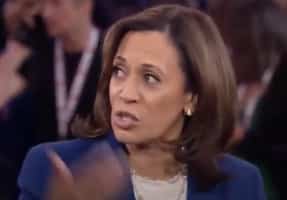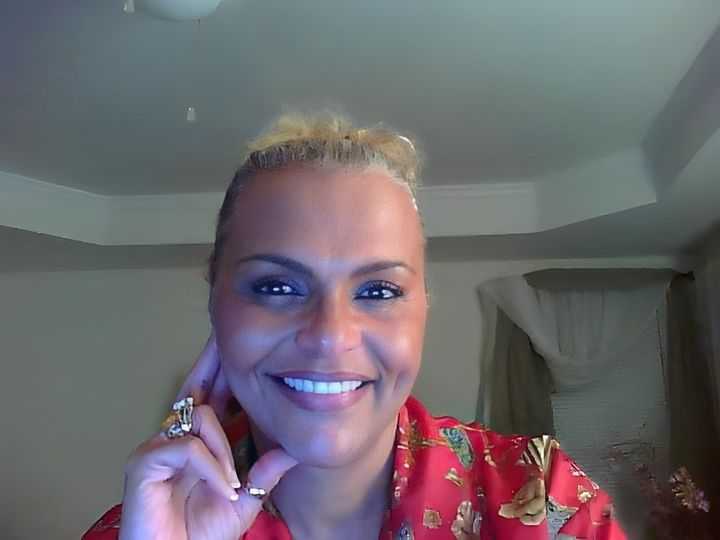
www.dailywire.com
Democrat Voters Have Been Hypnotized By Media Flunkies
Election season is now in full swing and voters are listening carefully to the ideas and policies of their candidates and taking the full measure of their vision and intentions for the future of this country, if they’re Republican voters. If they’re Democrat voters, of course, they have no idea what their candidates believe and they’ve simply been hypnotized into stupidity by media flunkies with all the integrity of jack-in-the-box jesters who bob up and down on their springs with grinning faces chattering mesmeric platitudes until they’ve turned the Democrat party into a shambling mob of idiots shuffling toward November with slack mouths and empty eyes as if they were zombies, if zombies were lemmings, if lemmings actually walked blindly off cliffs like zombies who were lemmings acting like zombies or like Democrats.
So today, as an exclusive service of The Daily Wire, we’re going to fill in the blanks left by the many, many incisive and probing interviews Kamala Harris and Tim Walz will never do because just look at them. That couldn’t end well.
So what does Kamala Harris actually believe?
Well, on the environment, she believes we should absolutely ban fracking as long as we don’t ban fracking but only ban fracking, which she won’t do, but will. She proudly stands on her record of supporting the Green New Deal through a bill deceptively named the Inflation Reduction Act so she doesn’t have to proudly stand on her record of supporting the Green New Deal, which sucks.
Kamala is also proud of her role as border czar which she never was although, before she never was, when she was, she did many good things which decreased illegal immigration by declaring no immigrant is illegal so now there is no illegal immigration — problem solved. She also called Donald Trump’s border wall “an UnAmerican, stupid waste of money on a medieval vanity project” and she promises she’ll build it too to end illegal immigration which she ended when she was never border czar, but totally was.
WATCH: The Andrew Klavan Show
On the economy, Kamala says she knows Americans are suffering from raging inflation but she says that inflation was caused by Donald Trump’s reckless actions, like not being president, so Americans should vote for a change by sending Kamala to the White House where she already is.
All right, what about foreign policy? Well, when it comes to Israel, Kamala completely supports Israel’s right to exist as long as they don’t do it in any recognizable material form. That would be imperialism, or settler colonialism, or just too many Jews in one place called Israel. And Kamala believes those Jews have the right to defend themselves, as long as that doesn’t stop people from killing them because, after all, the killers are people too, with hopes and dreams, like the destruction of Israel.
Now as for Vice Presidential candidate Tim Walz, his positions are a little clearer. For instance, he says he wants to protect the constitutional right to bear arms by banning the weapons of war he carried in war, which is none, so problem solved. But Americans can trust Walz because he’s just a down home, regular, plaid-shirt wearing midwestern football coach who wants to cut the sexual organs off children, just like any totally normal all-American Midwesterner — Ed Gein, say, or any of those other mid-westerners who look totally normal until one day you open the newspaper and you’re, like, “Holy crap, so many mutilated bodies, and he looked completely normal, how could we ever have known?” But the important thing is Walz supports abortion. I mean, the guy just has a thing for butchering children. There’s no sense lingering on it, it’s just too disturbing. Let’s move on.
So there you have it. Democrat voters, if you’ve gone to Kamala Harris’s website and you’ve noticed there’s not a single policy proposal there, and if you’ve said to yourself, “Hey wait, how come my mouth is hanging open and I’m shuffling mindlessly toward November as if I’m some kind of zombie lemming about to vote for a candidate who believes in absolutely nothing,” now you know that Kamala Harris does in fact believe in what she says. Which is absolutely nothing.
* * *
This excerpt is taken from the opening satirical monologue of “The Andrew Klavan Show.”
Andrew Klavan is the host of “The Andrew Klavan Show” at The Daily Wire. He is the bestselling author of the Cameron Winter Mystery series. The fourth installment, “A WOMAN UNDERGROUND,” is now available for PRE-ORDER. Follow him on X: @andrewklavan
The views expressed in this satirical article are those of the author and do not necessarily represent those of The Daily Wire.

















